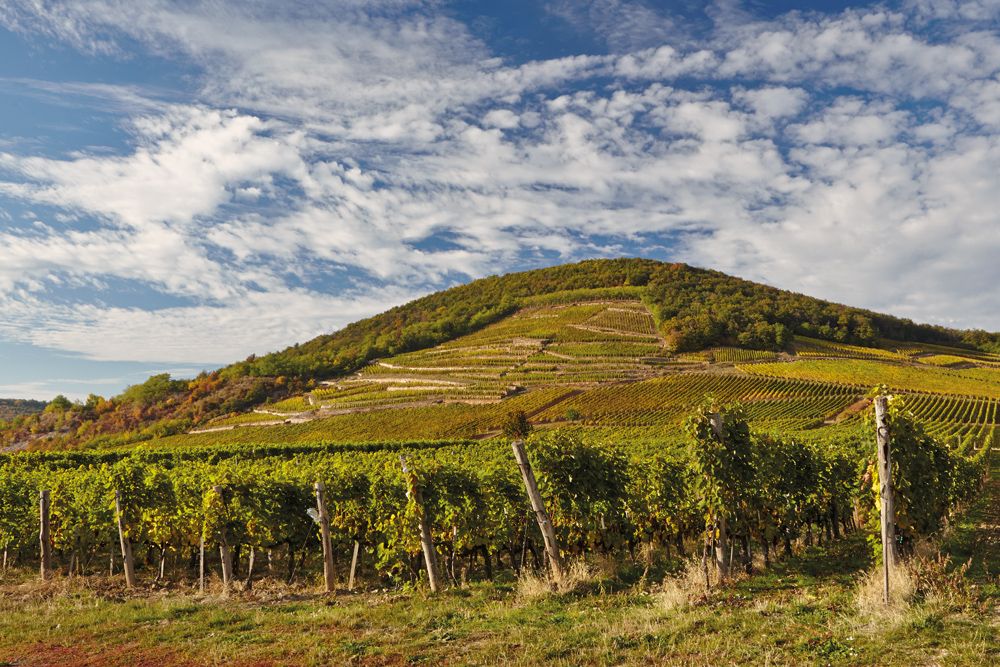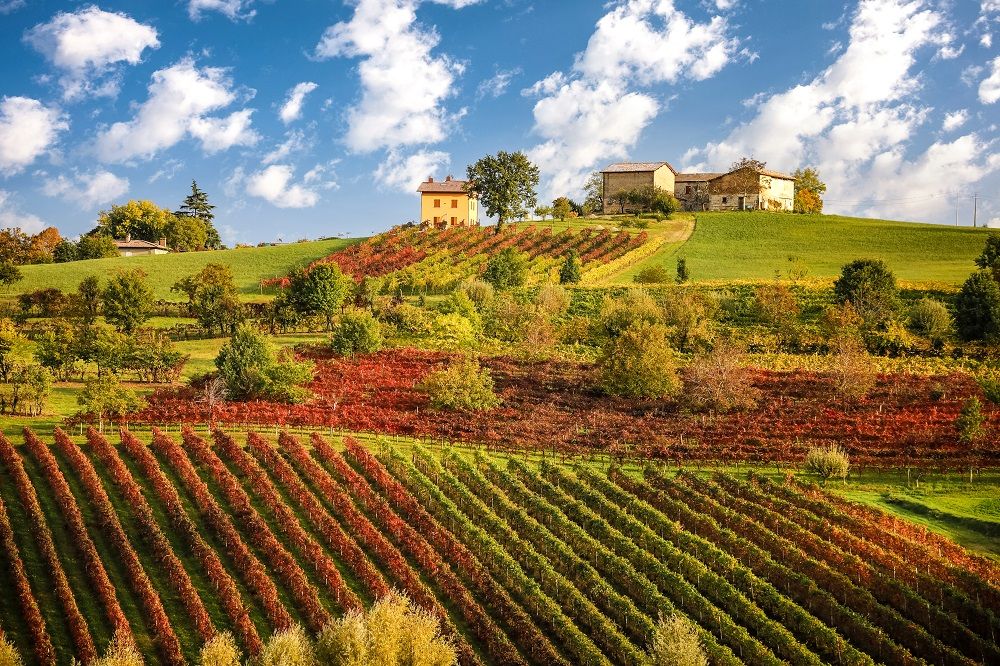The first Furmint February event last year helped shine a well over due spotlight on one of Hungary’s fast emerging wine styles. The 2020 event on January 29 promises to shine that light even more on its diverse characteristics.
There are more noble red grapes in the wine world than white, but Furmint is increasingly showing its mettle as a worthy addition to that list. And the UK trade has another chance to decide for itself at the second Furmint February event on January 29 2020 at Merchant Taylors’ Hall, 30 Threadneedle Street in London.

Diverse landscape helps make distinctively different Furmints
Last year’s tasting revealed that Furmint is a half-sibling of Riesling and Chardonnay via its parent Gouais blanc (aka Heunisch Weiss) and how it channels a little of the spirit of both. It’s like Riesling in its versatility and ability to go from bone dry to intensely sweet, always underlined by a streak of appetising acidity.
Second, there are similarities to Chardonnay in its ability to produce great sparkling wine, steely linear whites (think fiery, spicy Chablis) and complex layered ones (think Burgundy on steroids). But there’s much more to it than just a copy of its siblings in the way it captures a little bohemian wildness along with the poise and build of an aristocrat.
More important than all this background is the fact that it delivers simply delicious, and classy, wines. This is something that appeared to surprise visitors to Furmint February’s launch tasting in January 2019, though it has been famous for its quality for a long time. There’s a story that its Slovenian name, Šipon, is a corruption of Si c’est bon (meaning “it’s so good”), a name given by Napoleon’s soldiers when they discovered it on their travels.
Worthy of attention

Furmint is well worth wine buyers’ attention says Caroline Gilby MW
In 2020, the plan is to build on that introduction to Furmint and to highlight some of the other features that make this grape worthy of attention. Longevity and age-ability are characteristics that will be explored through a vertical tasting going back to 2003.
This hot dry year (so not much botrytis) was a turning point for the whole region, when many producers started to think seriously about quality dry wines as a priority, rather than as an afterthought when they couldn’t make good sweet stuff.
There is actually a long track record of the luscious Aszú wines being able to age for decades (even the rather bastardized versions produced in the communist era), but serious dry wines are only a couple of decades old. Making dry wines deliberately requires different vineyard management to produce healthy grapes, rather than rot, even of the noble kind. It’s been a rapid learning curve to learn how best to grow and vinify this new generation of amazing dry wines, though even in the earlier efforts, the sheer quality of the grape and terroir shines through.
Tokaj legend Istvan Szepsy is kindly donating his Úrágya Furmint 2003 (his even more legendary 2000 is sadly pretty much all gone). This is probably the only ever opportunity to taste this wine in the UK, so his masterclass is definitely not to be missed. Other wines in this masterclass line-up are yet to be confirmed but will provide an insight into both Furmint’s ageing potential and the evolution of winemaking styles over the past two decades.
A second masterclass with winemaker and educator László Balint will showcase all the faces of Furmint from sparkling, via dry whites, to sweet.
Understanding Furmint

The Furmint February tasting on January 29 is the start of a month of events celebrating Furmint
Hungary has by far the most Furmint planted and here increasingly Tokaji producers (and growers of the grape in other countries) are also focusing on making wines from specific crus (dűlő in Hungarian). At this micro scale, it has actually long been recognised that there are distinct variations between Furmints grown in different vineyard crus in Tokaj itself.
Indeed, the best of Tokaj’s vineyards have been identified by individual names since as far back as the 13th century, when Furmint almost certainly played a role. The first documented mention of Király-hegy (King Hill) is from 1280 where Barta produces superb wines today from its steeply terraced Öreg Király vineyard. Indeed, Furmint’s ability to show vineyard characteristics was probably key in the very early classification of vineyards in early 18th century, before port or Bordeaux.
Furmint is more than capable of reflecting site differences, which depend on details like the exact make-up of the volcanic soils (lighter wines from loess versus more structured ones from rhyolite for instance), altitude and aspect. Furmint in other regions and countries also deserves a mention: most notably Somló in Hungary (though it pops up in Eger and Badascony). Its second home is Slovenia (as Šipon) then Croatia (usually called Moslavac or Pušipel) with small pockets (usually from producers with Hungarian roots) in Serbia, Slovakia and Romania.
With this glowing reputation, it is perhaps surprising that Furmint hasn’t travelled any further outside its central European homeland. It seems trials in Western Australia produced too little fruit to even evaluate, and there is rumour of some tiny plantings in the Russian River region of California. Even if Furmint is, in practice, the grape of Hungary and her neighbours, it has more than enough about it to join the ranks of great grapes. Come along to Furmint February 2020 and find out if you agree.
- Come and discover the different styles of Furmint for yourself at the special Furmint February tasting to be held on January 29 2020 at Merchant Taylors’ Hall, 30 Threadneedle Street in London. Click here to register.










































